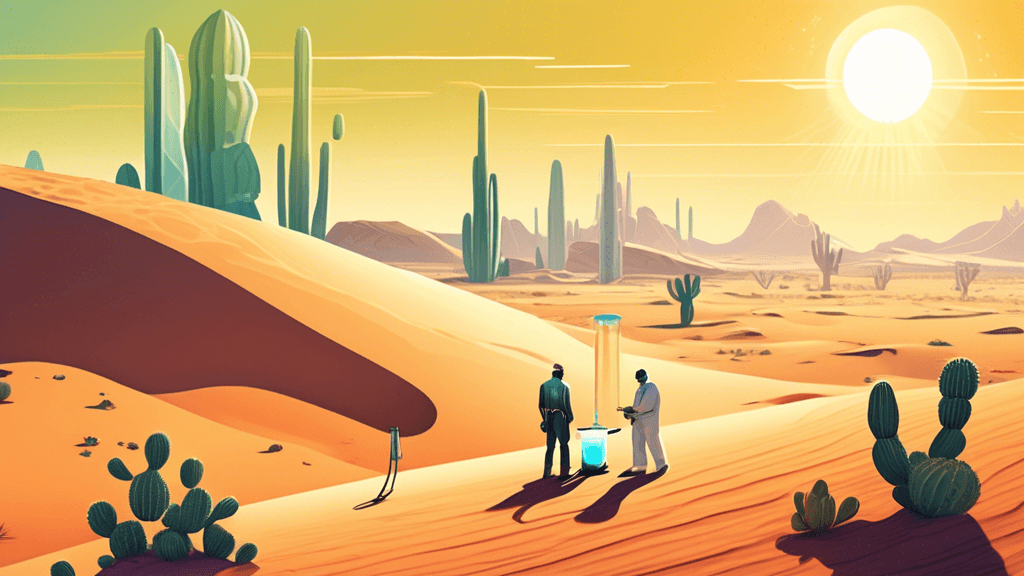
Quenching Thirst: The Search for Water in Deserts
Share
The Vital Quest for Water in Desert Regions
Deserts, characterized by their harsh conditions and extreme scarcity of water, pose severe challenges for both human inhabitants and wildlife. The relentless search for water in these arid landscapes is not only a pursuit for survival but also a fascinating study of human innovation and resilience. What strategies have been developed to cope with this scarcity, and what can we learn from them?
Understanding Desert Water Scarcity
The stark landscapes of deserts are a result of their extremely low precipitation. Regions such as the Sahara in Africa, the Gobi in Asia, and the Mojave in North America receive less than ten inches of rain annually, creating environments where water becomes a precious commodity.
Traditional Methods of Water Harvesting
Indigenous peoples and long-time inhabitants of desert areas have developed several ingenious methods of collecting and preserving water. These include:
- Fog Traps: In coastal deserts, fog nets are used to condense fog into droplets of water, which are then collected for use.
- Underground Dew Collectors: Ancient techniques involved the use of underground canals that cool the air and condense moisture, which then percolates through the soil and is collected.
- Water Wells: Digging deep into the earth to reach underground aquifers has been a common practice, although this is being stretched to its limits with the increasing demands on these limited resources.
These methods reflect a deep understanding of the natural world, tuned to the rhythms and offerings of their specific environments.
Modern Innovations in Water Technology
As traditional methods become overtaxed by population growth and industrial demands, modern technology has stepped in to offer alternative solutions. Recent innovations include:
- Atmospheric Water Generators (AWGs): These devices extract moisture from the air using refrigerative or desiccative processes, even in arid climates.
- Desalination Plants: Particularly in coastal desert regions, desalination plants remove salt from seawater to make it potable, though they are expensive and energy-intensive.
- Solar-Powered Water Harvesters: Harnessing the ubiquitous solar energy available in deserts, these devices use the heat of the sun to produce water condensation from ambient air.
As Dr. Sarah Jackson, a hydrologist specializing in desert ecosystems, remarks, The challenge of securing water in desert environments demands innovation. Each advancement brings us closer to sustainable living in these harsh areas, but conservation efforts are equally critical.
Environmental and Conservation Concerns
While technological advancements promise relief, they also bring environmental concerns. Large-scale desalination can result in the pollution of marine habitats with brine waste, and excessive groundwater pumping can lead to the subsidence and collapse of terrestrial ecosystems.
It is essential to balance these innovative water extraction methods with robust environmental conservation strategies. Sustainable practices in water management have never been more critical, as emphasized by leading environmentalists. These practices precisely articulate how interconnected our survival strategies are with the broader health of our planet.
The Path Forward: Sustainability and Policy
Looking ahead, the integration of technology with traditional knowledge presents a hopeful pathway forward. Policies that support research and development in water technology while respecting and integrating age-old wisdom will be crucial.
Moreover, global cooperation in sharing knowledge and resources can amplify the effectiveness of local solutions, creating models that can be adapted to various arid environments across the world.
As we continue to face global climatic changes, the quest for water in deserts is not just about survival but about fostering a sustainable coexistence with some of the planet's most vulnerable ecosystems. How we manage this precious resource will speak volumes about our commitment to environmental stewardship and to future generations.
Call to Action
If you are captivated by the resilience and adaptability required to navigate life in desert conditions, or if you are passionate about environmental conservation, consider engaging more deeply with this subject. Support organizations that focus on water conservation, participate in community-driven water management initiatives, or simply educate yourself and others about the sustainable practices that are essential for our shared future. Your involvement can make a significant difference.





